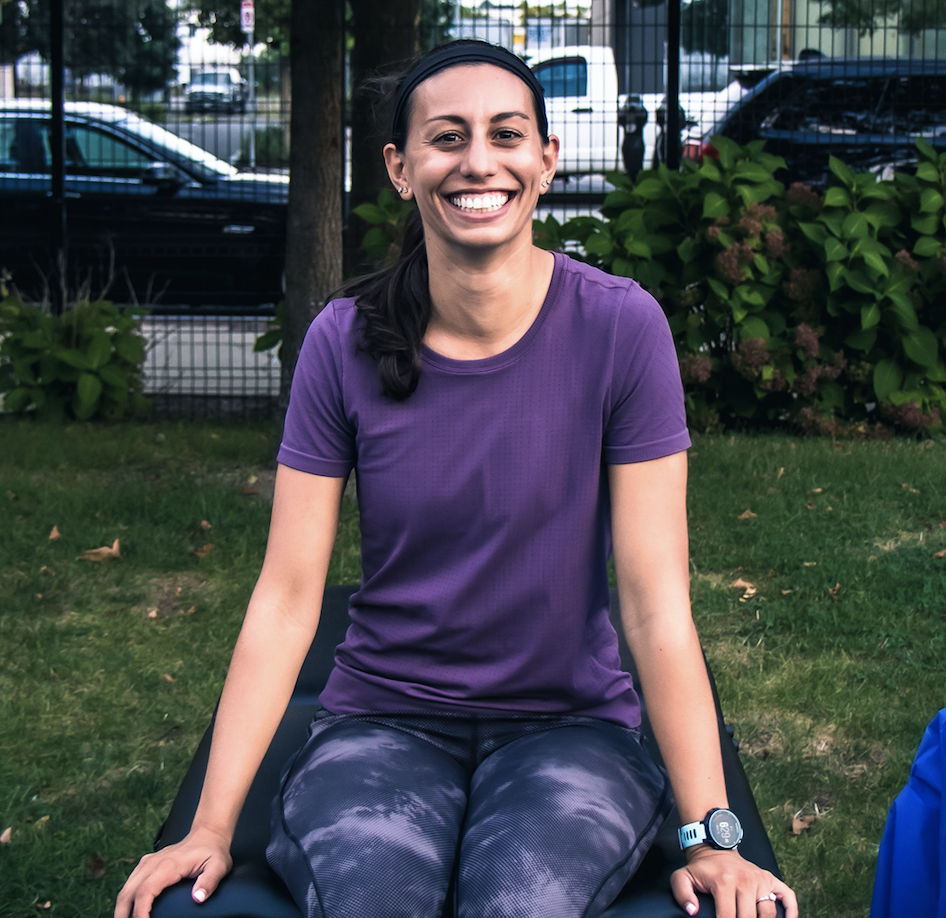5 Tips To Help You Return to Running Postpartum

Hey Ladies, are you ready to return to running?! The baby is here, your body is feeling better when moving around, and after the first few weeks postpartum you may be thinking, when is the right time for me to hit the road or trails again? Following these 5 tips to return to running postpartum will help you do so in a safe and healthy way.
Taking care of yourself so you can take care of your newborn is an essential part of your physical and mental health. I know it is difficult, but try not to guilt yourself out of that time to recover, even if it is for 10 minutes.
Remember having a baby is no small thing- the changes that occur to women’s bodies include (but not limited to):
- Diaphragm (major breathing muscle) gets pushed up into our rib cages and does not function properly
- Ribs spread which affects both the diaphragm and pelvic floor function
- Pelvic floor was under extra pressure from the growing baby
- Abdominals stretch out
- Back muscles overcompensate and tighten
When considering an appropriate time to return to running it is important to take into consideration your birthing experience, if any tearing may have occurred, and how you delivered your baby (c-section, vaginal, etc). I highly recommend going into your 6-week postnatal check-up with a list of questions for your doctor.
These can and should include:
- An explanation of your fitness level prenatally
- Your plan for what type of exercise you want to participate in postpartum.
- How breastfeeding may play a role in returning to exercise.
After you talk to your doctor and you are cleared to return to exercise, what else should you consider?
5 Tips To Return To Running Postpartum
Seek an Assessment from a Pelvic Floor Physical Therapist
You might have heard this advice from a fellow new mom or physical therapist friend, but what does physical therapy do for you postpartum? Physical Therapists (PTs) are movement specialists and can assist with you learning about how your body has changed during pregnancy. They can explain what changes have occurred in your posture, including how your center of gravity has altered, and how that can influence your balance. A PT can also explain how your muscles have changed length, in and around your pelvis, and how to improve imbalances that have occurred. Also, they can help give you useful tips on how to MOVE as well as carry/lift your baby, and MUCH more!
This is something often neglected by other health care providers and is not yet the standard of care, since most people think of referring patients to physical therapy only when they have PAIN! You do not need to be experiencing pain to see a physical therapist postpartum!
Establish Your Breath Again
As mentioned before, our diaphragm (major breathing muscle) moves up into our rib cage and allows for room for the baby in our abdominal cavity. Therefore, our diaphragm is much smaller and does not contract and relax to its full capacity.
You might have noticed in your second and third trimester, you were having difficulty breathing, or you felt short of breath doing things you usually do without any issues- including walking up the stairs.
In this case, the diaphragm was an influencer in that difficulty, and now she is going to need some love during your recovery.
Clients frequently ask me, “what can I do in my first weeks postpartum before being cleared by my doctor?”
Breathing exercises are a great place to start!- restoring the normal length of your diaphragm will set you up for success once you get back to running and will help to decrease shortness of breath with strength training and higher-impact activities like running.
To find out tips on how to do this click here.
Give your Body Time to Recover
Our bodies have physiological timelines that we can not speed up. What I mean by that is various tissues (muscles, ligaments, connective tissue) take time to heal after an event such as pregnancy. The recovery of the levator ani muscle (or one of the muscles around the pelvic floor), as well as the connective tissue and nerves around the pelvic floor, generally takes 4-6 months postnatally to fully recover.
For any moms who have had a c-section; abdominal fascia usually takes around 6-7 months to get back to its original strength post-c-section! Due to the surgical intervention, this will have an impact on the recovery timeline.
Strength Training is KEY
You are doing everything right so far. Taking the time you need to recover by slowly easing back into exercise. Practicing your breathing, and mastered your ability to exhale and inhale without compensations.
” What can I do now?” is a frequently asked question from my clients, and believe me, I HEAR YOU and I GET IT! You want to lose the baby weight and feel like you have more energy. All the while, you are anxiously awaiting your return to running. BUT, let’s take one step back, please.
Let’s focus on strength training!
Strength training in the postpartum period should start gradually with the pelvic floor and core. Include mobility to help restore spinal health, and strengthening to muscles around the hips. These types of exercises will put you on a path to success.
A pelvic floor PT is a good option in your early postpartum period. You will know exactly where and how to start.
Every mom is different and it is important you get the care your body needs to recover optimally and decrease your risk for injury.
Gradual Return to Running
In the most recent research, Tom Goom of RunningPhysio
discusses giving your body 12 full weeks to recover before even attempting running. This research was based on healing timelines and various other factors that high-impact activities affect. These additional factors can include having sufficient strength and balance in the pelvis and lower body.
Common areas to monitor when returning to running are pelvic floor heaviness, dragging, or moderate to severe pain in the pelvic floor region. Pain 0/10-3/10 with no lasting pain into the next day is acceptable. An increase in symptoms of incontinence including urgency to use the bathroom, difficulty emptying your bladder, or leaking during a run, consider seeing a physical therapist to assist in your symptoms. Be sure to monitor these symptoms before and during your early runs.
Consider a slow gradual return to running with no more than 10% of mileage increase a week. This will lower your risk for injury and include breaks in a run (walk-runs) can be helpful initially. Be sure to be cleared by a physical therapist who can perform a return to run screen. They will be assessing muscle strength, mobility, and tissue tolerance so you are ready for moderate to high impact activities such as running!
Following these 5 tips to return to running postpartum will help you get back in a healthy and efficient way.

Juliana is a Women's health and Orthopedic Doctor of Physical Therapy. She is the founder of Pacer Physical Therapy providing both in-home and virtual care to new moms and runners. She started Pacer PT to empower pregnant and postpartum moms who want to get strong through education, exercise, and healthy habits. Juliana believes that all women should have an equal opportunity to balance, family, work, and fitness so they can be healthy and active with their families.









